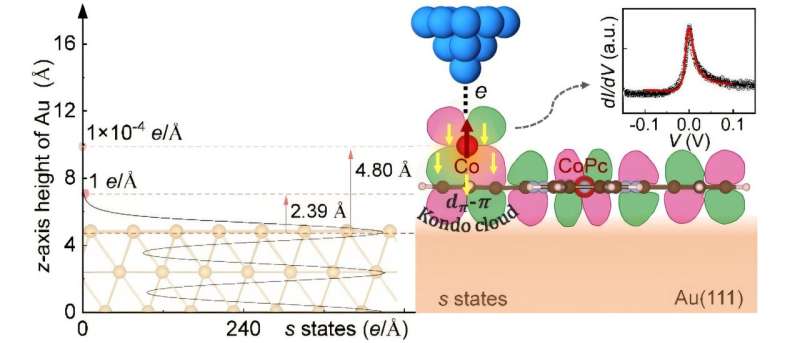A groundbreaking discovery by a research team led by Prof. Li Xiangyang from the Hefei Institutes of Physical Science at the Chinese Academy of Sciences reveals that a single organic molecule can induce the Kondo effect in magnetic atoms. This challenges the long-held belief that the phenomenon requires a vast reservoir of metallic electrons. Their findings were published in the journal Physical Review Letters on November 7, 2025.
The Kondo effect describes a quantum many-body phenomenon where conduction electrons in a metal collectively screen the magnetic moment of a localized impurity atom. Traditionally, it was thought to emerge only in systems with a large pool of metallic electrons. The new research, however, demonstrates that cobalt phthalocyanine (CoPc) molecules, when deposited on a metallic substrate, can effectively act as an electron reservoir. This innovation creates what the researchers refer to as the first “molecular Kondo box.”
To achieve this, the team investigated the interaction between cobalt atoms and CoPc molecules in a system known as Co–CoPc/Au(111). They conducted first-principles calculations alongside experimental validation, revealing that the π-electron states of the CoPc molecules hybridize with the conduction electrons of the gold substrate. This hybridization enables the CoPc molecules’ π-electrons to behave similarly to itinerant electrons, a significant shift from traditional understandings.
The overlap of the π-orbitals with the dπ orbitals of the cobalt atom suppresses competing screening from the metallic substrate. This dynamic lays the groundwork for the formation of a Kondo singlet at the molecular scale. Notably, the researchers found that the Kondo temperature could be precisely tuned by manipulating the number of cobalt atoms and the overall symmetry of the molecular system.
This discovery represents a significant expansion in the understanding of Kondo physics, introducing a new degree of stability and tunability in spin states. As the research team states, it not only challenges established theories but also opens avenues for advancements in nanoscience and molecular electronics.
The implications of this research extend beyond theoretical physics, potentially informing future developments in quantum information technologies. The findings could pave the way for more sophisticated molecular devices that capitalize on the unique properties of the Kondo effect.
For further details, the original study, titled “Co and CoPc Molecular Kondo Box on Gold Surface,” can be found in Physical Review Letters. The research team aims to explore the practical applications of their findings in the growing field of molecular electronics and quantum computing.



































































